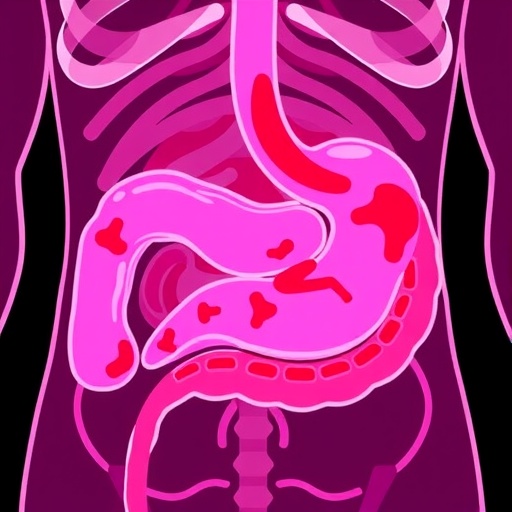In a significant advancement in the management of severe acute pancreatitis (SAP), researchers have identified critical predictive factors that could dramatically improve the efficacy of blood purification treatments. A study led by a team of prominent medical researchers including Chen B., Chen J., and Huang H. has brought to light the role of admission hematocrit and fluctuations in blood urea nitrogen (BUN) levels in determining treatment outcomes for patients suffering from this debilitating condition.
The study, published in the Journal of Artificial Organs, analyzed a cohort of SAP patients, aiming to uncover the underlying factors that correlate with patient survival and overall health improvements post-treatment. Severe acute pancreatitis, a sudden and serious inflammation of the pancreas, can lead to multi-organ failure and is associated with high morbidity rates. Blood purification therapies have emerged as a potential treatment avenue, yet their success can vary significantly among individuals.
Hematocrit, which refers to the proportion of blood volume occupied by red blood cells, serves as a crucial indicator of a patient’s fluid status and overall health. In this research, the scientists meticulously gathered data on patients’ admission hematocrit levels as a means to establish prognostic significance. Higher hematocrit levels upon admission were found to correlate with poorer patient outcomes, indicating that this metric should be closely monitored in clinical settings.
The researchers also shed light on the importance of BUN fluctuations in predicting treatment success. BUN, a waste product formed in the liver and eliminated by the kidneys, can reflect kidney function and, by extension, the severity of systemic illness. The study highlighted that patients experiencing significant fluctuations in BUN levels after admission were at a higher risk of adverse outcomes. These findings suggest that consistent monitoring of BUN levels could aid healthcare professionals in making timely and informed decisions regarding treatment plans.
The implications of these findings are profound for clinical practice. By integrating hematocrit and BUN assessments into routine evaluations for SAP patients, healthcare providers may be better equipped to stratify risks and personalize therapeutic approaches. This could lead to more targeted interventions that address the specific needs of patients, ultimately improving health outcomes and enhancing quality of care.
Moreover, the research team emphasizes the potential for developing predictive algorithms that incorporate these biomarkers to facilitate early interventions. Such algorithms could potentially streamline the assessment process for SAP patients, enabling quicker responses to changing clinical conditions and preventing the onset of severe complications. The integration of such technology into clinical workflows could represent a landmark shift in the management of severe acute pancreatitis.
This study also opens avenues for future research, particularly in exploring additional biomarkers that could complement hematocrit and BUN levels. Investigating broader metabolic and hematological parameters may yield further insights into the disease process and its management. Understanding the biochemical pathways involved in SAP could lead to the identification of novel therapeutic targets.
Furthermore, the role of interdisciplinary collaboration is underscored by this research. As the study indicates, a multifaceted approach that includes specialists from critical care, gastroenterology, and nephrology is essential for managing complex cases of SAP. This collaborative effort can facilitate a more comprehensive understanding of patient needs and lead to improved treatment protocols.
While the initial findings are promising, it is essential to acknowledge the limitations of the study, including the sample size and the need for validation in larger cohorts. Future studies should focus on longitudinal data collection and real-world applicability of the findings to strengthen the evidence base and support wider adoption in clinical practice.
In conclusion, the research by Chen et al. provides critical insights that could revolutionize how severe acute pancreatitis is treated. By identifying hematocrit and BUN fluctuations as pivotal indicators, the study lays the groundwork for future innovations in patient management and care. These breakthroughs not only enhance understanding of the disease but also pave the way for improved survival rates and health outcomes in one of the most challenging conditions in medicine.
This research exemplifies the ongoing evolution of medical science, where traditional approaches are being supplemented with data-driven insights. As the medical community continues to grapple with the complexities of diseases like severe acute pancreatitis, studies like this will serve as critical catalysts for change, guiding clinicians toward more effective and personalized treatment strategies. With the right focus on predictive factors, the promise of enhanced patient care is not just a hope but increasingly within reach.
As we anticipate further research in this area, the discussion should extend beyond the findings themselves to consider the impact these insights will have on future medical practices. The journey toward improved health outcomes in severe acute pancreatitis is ongoing, and the lessons derived from this study will undoubtedly shape how healthcare practitioners respond to this challenging condition.
Subject of Research: Severe Acute Pancreatitis and Blood Purification Treatment
Article Title: Admission hematocrit and fluctuating blood urea nitrogen levels predict the efficacy of blood purification treatment in severe acute pancreatitis patients.
Article References:
Chen, B., Chen, J., Huang, H. et al. Admission hematocrit and fluctuating blood urea nitrogen levels predict the efficacy of blood purification treatment in severe acute pancreatitis patients.
J Artif Organs 28, 431–438 (2025). https://doi.org/10.1007/s10047-025-01501-2
Image Credits: AI Generated
DOI: https://doi.org/10.1007/s10047-025-01501-2
Keywords: Severe acute pancreatitis, hematocrit, blood urea nitrogen, blood purification treatment, predictive factors, patient outcomes, clinical practice, biomarkers, interdisciplinary collaboration.




